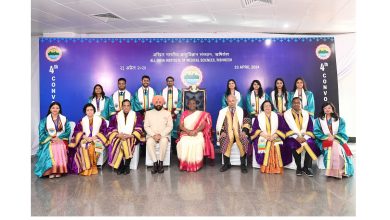
LVAD is implanted through open-heart surgery, where one end of the device is attached to the left ventricle
A 48-year-old female Maldivian patient recently underwent a complex HeartMate II LVAD implant at BGS Gleneagles Global Hospital. The patient underwent the rarest heart surgery, after experiencing congestive heart failure for the past seven years. Looking at her rapid plunging health condition, and no signs of getting an immediate heart donor, the medical experts decided to implant HeartMate II LVAD (Left Ventricular Assist Device).
Doctors suggest LVAD only when the heart has become stiff to an extent that it can’t pump blood efficiently and effectively. LVAD is implanted through open-heart surgery, where one end of the device is attached to the left ventricle – where the heart pumps out blood, and the other end is connected to the aorta – main artery which helps the blood reach the other parts of the body.
The complex surgery was performed successfully by a team of experts including Dr Bhaskar BV, Sr Consultant and Head – Cardio-Thoracic Surgeon, BGS Gleneagles Global Hospital, Dr Madhusudhan, Consultant Cardiac Surgeon, Dr Shivprakash S, Senior Cardiac Anaesthesist, Dr Ravindranath Reddy, HOD & Senior Consultant – Cardiology, BGS Gleneagles Global Hospital, Bangalore, Dr Gyandev, Consultant Cardiology.
Dr Ravindranath Reddy said, “The patient was admitted to our hospital in a very feeble condition. Her survival chances were less than 10 per cent, for the next three to six months, if the right treatment was not provided to her. The whole team prepared well and followed all the COVID protocols before performing the surgery. In most cases, the LVAD is implanted in two situations either as a bridge to transplant or destination therapy, in both cases, the survival rate is one to two year, close to 85 – 90 per cent, similar to heart transplant.”
The surgery lasted for four hours, and during those crucial hour’s doctors implanted the HeartMate II pump which is larger or bulkier than the newer generation pump. This pump has an inflow cannula and an outflow graft. It has a driveline connected to a power source that remains outside the body. After the transplant, the patient was provided with proper ICU care.
Dr Bhaskar BV said, “In most cases, doctors suggest implanting LVAD, to assist the patient’s heart to pump blood successfully to other parts of the body, until she finds a donor for the transplant or to give some relief from the symptoms and help other organs to function properly. Though it is a bit uncomfortable to adjust to the device in the beginning slowly they get used to it and get back to their normal lives. However, they must take strict precautions and keep track of their heart on the daily basis and follow their doctor’s instructions to avoid any episode.”
JoiceInbarani, Chief Nursing Officer, BGS Gleneagles Global Hospital said, “The recovery phase after implanting LVAD is the most crucial part of the treatment. After the surgery, the patient is highly prone to develop infections if sufficient care and the right medication are not provided to the patient. The patient is responding well to the medication and is infection-free.
The patient is out of danger and with this pump in place, she can perform all her routine physical activities except swimming.




